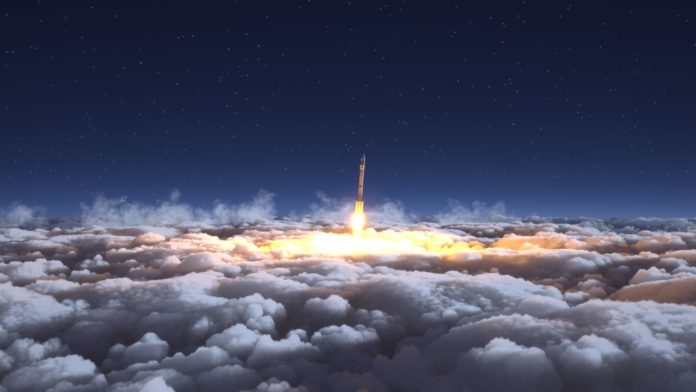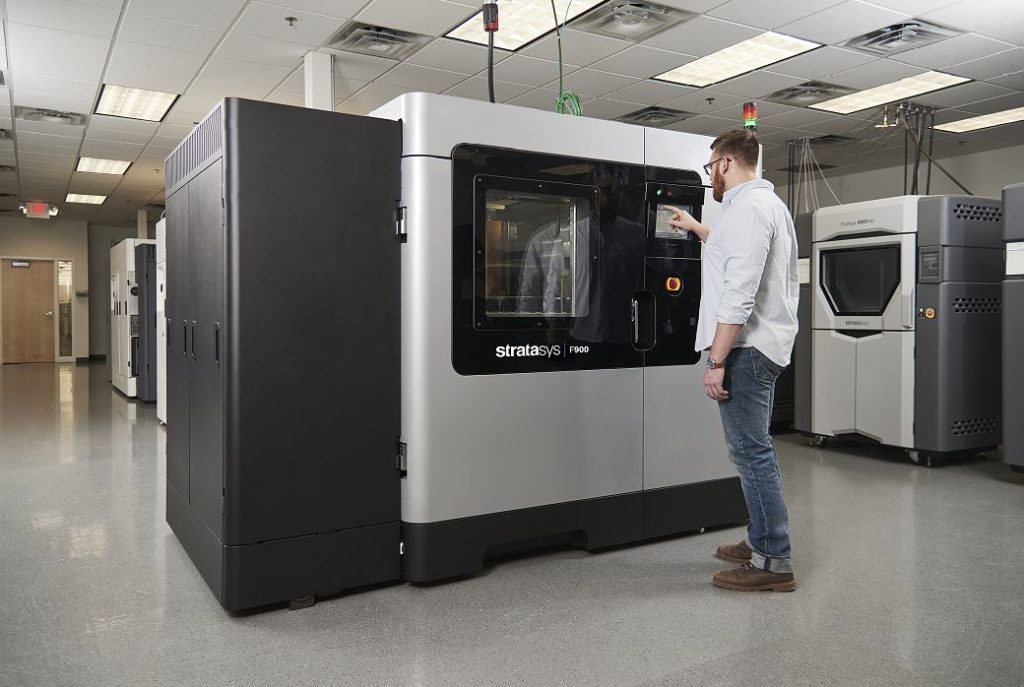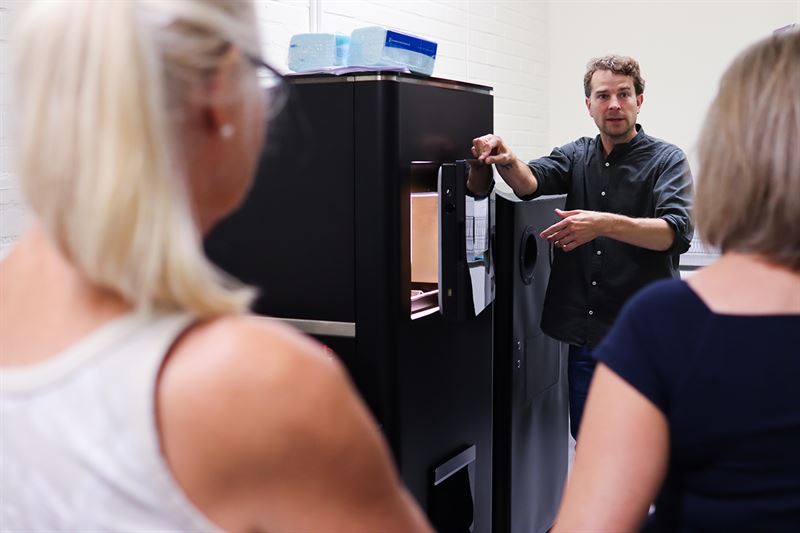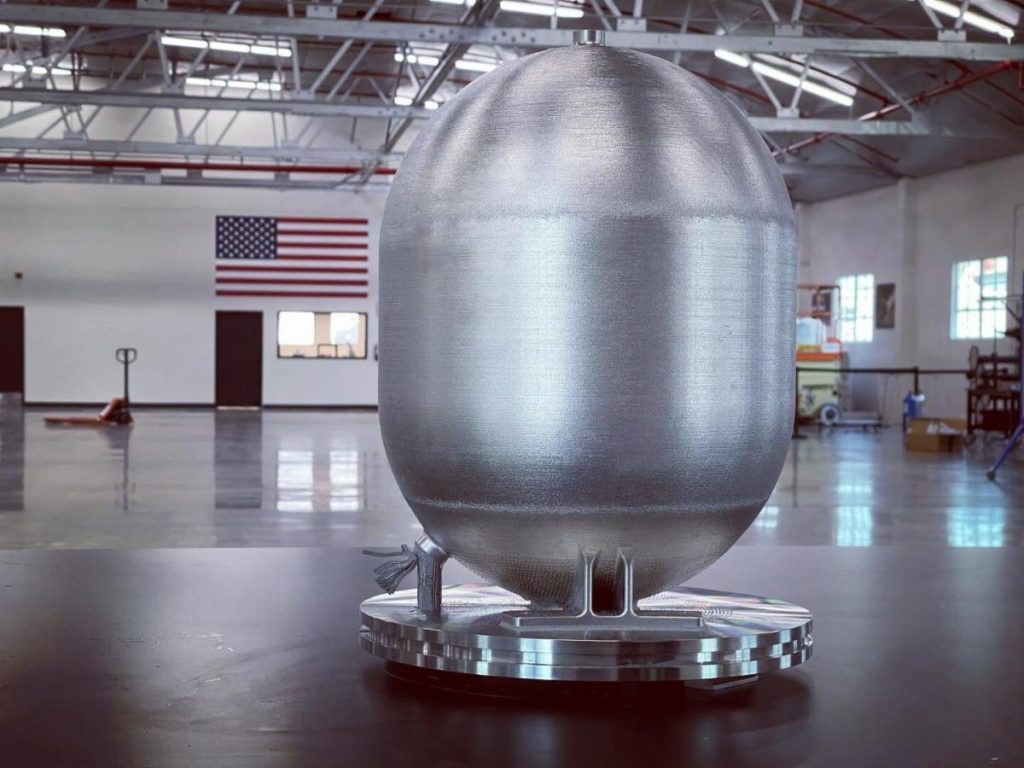
This series of news round-up gathers the latest news on acquisition of new equipment and companies that expand into new facilities.
Moving to bigger places
VBN Components, a producer of hard, 3D printed metals, has recently moved to bigger offices. Increased demand for their unique alloys – acknowledged for their high carbide content and wear resistance- has made the company outgrow its old premises. VBN has therefore moved to three times larger premises than before and can now increase production capacity with future demand.
The company reminds that when traditional alloys are replaced with one of VBN’s Vibenite® alloys, customers see that components last longer and provide increased performance in applications. This, of course, reduces spare parts costs, transportation and energy consumption, which can be added to the plus side of the sustainability equation.
Investments in new equipment
Given the (expensive) price of additive manufacturing machines and related-equipment, one can understand companies’ willingness to shout out the latest deals they signed with their customers. Today, Stratasys, wematter, Titomic and Velo3D have are celebrating their new contracts.
U.S. Navy to ramp up production with 25 Stratasys F900™ 3D printers

Stratasys has just been awarded a $20 million contract from the US Navy who will purchase up to 25 F900™ 3D printers over the next five years.
The delivery of the first eight 3D printed is expected before the end of 2021. In addition to the printers, the contract includes initial support and sustainment, materials, and development of initial training for the supplied systems.
This purchase is very timely as the U.S. Department of Defense (DoD) issued a report in January 2021 outlining its additive manufacturing strategy.
Among other objectives, the DoD set a goal of integrating additive manufacturing into both the department and the broader defense industrial base, while advancing and promoting the agile use of 3D printing.
“The benefits of additive manufacturing for military organizations like the U.S. Navy include cost-effectively extending the life of strategic and tactical assets like aircraft while ensuring sustainment activities can happen quickly and from virtually anywhere,” said Mark Menninger, Director of U.S. Government Business Segment for Stratasys. “This contract, the largest government project for Stratasys to-date, continues to expand the presence of industrial 3D printing from Stratasys across the U.S. government.”
The printers will be located on bases in the United States and Japan with the potential to be used to produce end-use parts, tooling and training aids, as well as to assist the Navy in achieving its goal of using distributed additive manufacturing practices to maintain its fleet of aircraft across bases worldwide.
Wematter’s first steps in education

As far as wematter is concerned, their new agreement with Berzeliusskolan high school in Linköping (Sweden) marks the company’s first step in advancing technical education and academia. Berzeliusskolan, described as a high school with one of Sweden’s most extensive technology programs, invests in the SLS 3D printer Gravity 2021. The high-school ambitions to remain at the forefront of technology specializations. With SLS 3D printing onboard, they will form a foundation in new courses, and help students go from idea, through design, and finally, a complete 3D printed part.
“We think that the proximity to the school, the professional treatment, the rental concept and the opportunity to recycle materials and use plant-based plastic feels like a very good choice. The overall impression of both Wematter as a company and their products has so far only been positive. We’re now up and running and we think the system is easy to use and that the prints are of high quality”, says Nils Winge, a high school teacher in CAD software, construction, engineering, and construction who works as an ambassador and exponent for 3D in education.
Velo3D expands team in Europe and secures aerospace customer loyalty

Following the utilization of their first Velo3D advanced metal AM system, Launcher has added another Velo3D system to its portfolio.
Unlike the first metal AM system they purchased in April 2021 to fabricate Inconel parts for their rockets, the second machine is meant to print Titanium. The new machine completes a portfolio that already includes several AMCM machines. For the developer of high-performance rockets for small satellites, this new purchase also proves out the value of 3D printing for delivering these satellites to orbit cost-effectively and with destination-orbit flexibility.
“Rocket engine turbopump parts typically require casting, forging, and welding. Tooling required for these processes increases the cost of development and reduces flexibility between design iterations. The ability to 3D print our turbopump—including rotating Inconel shrouded impellers, thanks to Velo3D’s zero-degree technology—makes it possible now at a lower cost and increased innovation through iteration between each prototype”, Max Haot, founder & CEO of Launcher explains.
Founded in 2017, Launcher is an emerging-technology company dedicated to developing efficient rockets that can deliver small satellites to orbit. Their “Launcher Light” rocket will carry payloads of up to 150 kg (330 labs) to low-earth orbit, using a single E-2 engine. A first launch is scheduled for 2024.
One of the company’s strategies is to use additive manufacturing in as many rocket components as possible. While Launcher’s new advanced manufacturing facility in Los Angeles will include a wide variety of in-house capabilities, the company also plans to take advantage of Velo3D’s contract manufacturing partners like Stratasys Direct Manufacturing when scaling up production, particularly for AM.
As for Velo3D, apart from its excitement about working with companies like Launcher, it should be noted that the company is making great strides in the AM industry as well. In March, it announced plans to merge with JAWS Spitfire Acquisition Corporation (NYSE: SPFR) and become a public company; and recently it has appointed two new Europe-based senior executives to support the demand for industrial metal AM.
Multimillion-dollar partnership enables Swinburne University to expand its additive manufacturing capabilities
Swinburne University of Technology has recently signed a new multimillion-dollar partnership with Melbourne-based additive manufacturing company Titomic. The university said this collaboration will bring “Titomic’s TKF1000 system to Swinburne, one of only two such 3D printing systems ever built. The machine saves money, time and precious metal resources by replacing long, slow and expensive labour-based methods to create space vehicle parts with a rapid-build process.”
Supported by a $2.3 million Australian Government Modern Manufacturing Initiative grant, this will enable the creation of lighter, stronger and more capable structures for space using materials such as low carbon emission ‘green’ titanium. This includes rocket nozzles, satellite components and high-performance coatings for radiation shielding and hypersonic protection.
This will be the first TKF1000 system at an Australian university and further extends the capabilities of the Australian Research Council Industrial Transformation Training Centre in Surface Engineering for Advanced Materials (SEAM) , which is led by Swinburne Distinguished Professor Christopher Berndt.
Using this technology, students, researchers and industry partners will be able to create large components in a faster and more environmentally responsible way, while opening exciting new possibilities for combining advanced material science at SEAM with cutting edge industrial additive manufacturing.
Senior Research Engineer Dr Andrew Ang says the technology is “a game-changer for Swinburne and the Australian space industry, in a sector that is projected to be worth US$1.1 trillion globally by 2040.”
“Currently in traditional subtractive manufacturing, up to 90% of materials are machined off during the production of aerospace parts. This technology will allow us to load a file and print a near net shape object, just like a 3D printer but at a much faster rate. No other technology can currently do this at this scale,” he says.
“Most importantly, it will allow us to train the next generation of Australian space industry workers and grow our biggest asset – our people.”
Remember, you can post free of charge job opportunities in the AM Industry on 3D ADEPT Media or look for a job via our job board. Make sure to follow us on our social networks and subscribe to our weekly newsletter : Facebook, Twitter, LinkedIn & Instagram ! If you want to be featured in the next issue of our digital magazine or if you hear a story that needs to be heard, make sure to send it to contact@3dadept.com





